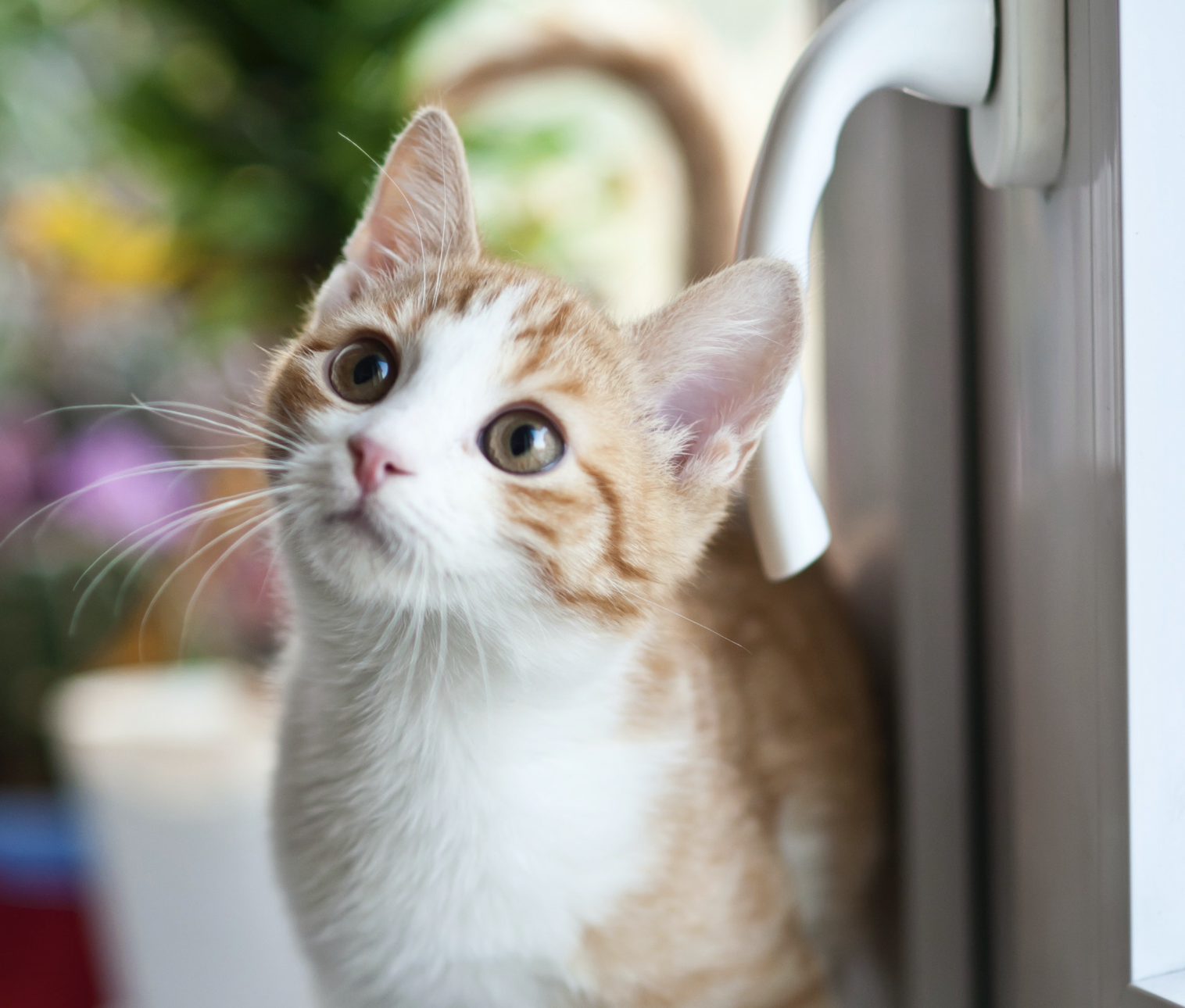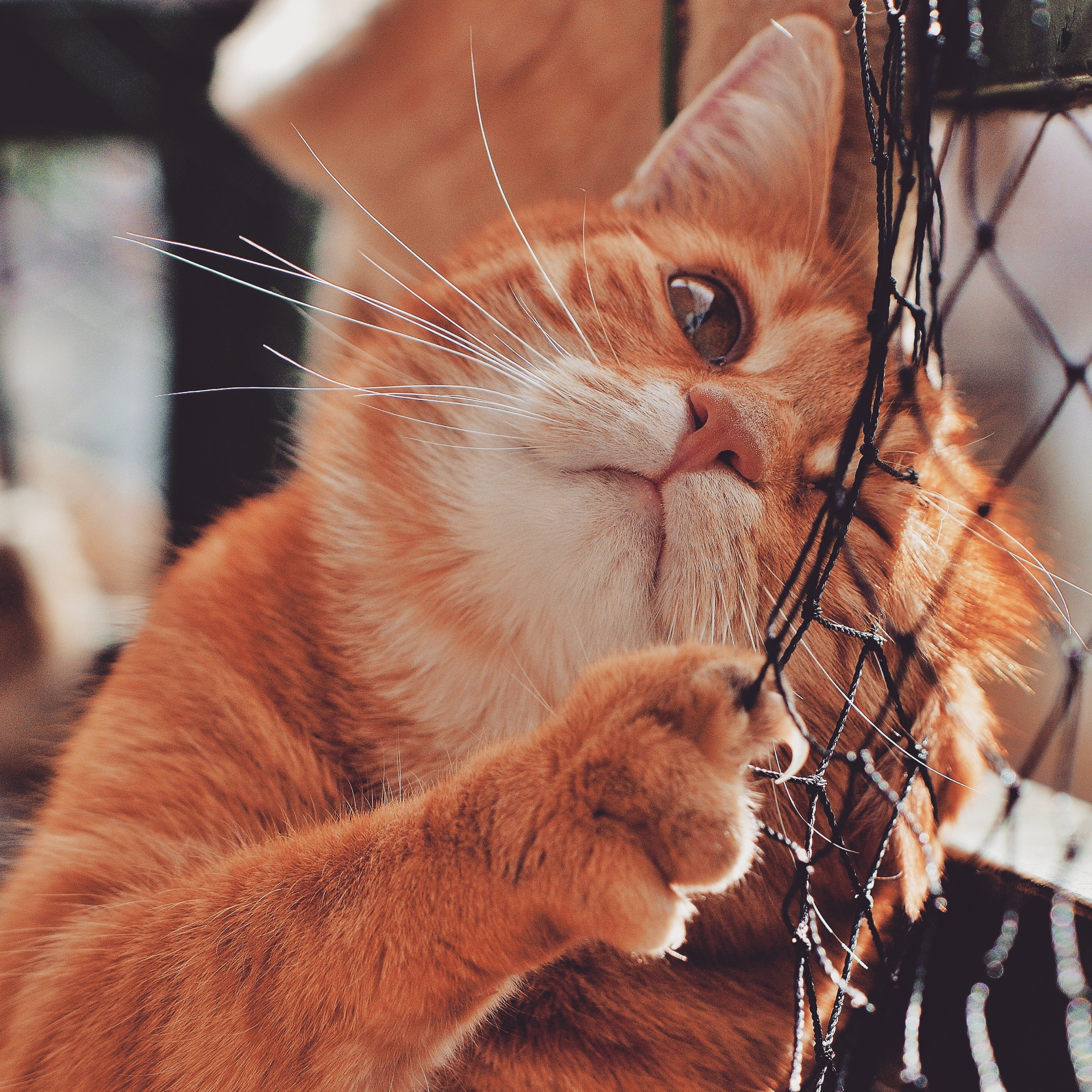Regular Suitable Meals with A Constant Supply of Fresh Water
High-Quality Cat Food: Look for cat food that is made with high-quality ingredients and meets the nutritional needs of your cat. Consider your cat's age, weight, and activity level when selecting a cat food.
Feed on A Regular Schedule: Establish a regular feeding schedule for your cat, and stick to it. This will help your cat develop a routine and maintain a healthy appetite.
Measure Portions: Use a measuring cup to ensure that you are providing the right amount of food for your cat. Overfeeding can lead to obesity and other health problems.
Provide Fresh Water: Make sure that your cat always has access to fresh and clean water. Change the water in their bowl regularly to keep it fresh.
Use A Water Fountain: Consider using a water fountain to encourage your cat to drink more water. Cats are often attracted to moving water, and a water fountain can help keep the water fresh and appealing.
Monitor Food Intake: Keep an eye on how much your cat is eating. If they are leaving food in their bowl or not finishing their meals, it could be a sign of an underlying health problem.
Adjust The Diet as Needed: If your cat has special dietary needs or health concerns, work with your veterinarian to develop a diet that is tailored to their specific needs.
Clean and Comfortable Bed
The Right Bed: There are many types of cat beds available, including soft plush beds, heated beds, and raised beds. Choose a bed that is suitable for your cat's size and preferences.
Keep The Bed Clean: Clean the bed regularly to keep it free of dirt, dust, and debris. Wash the bed cover or cushion according to the manufacturer's instructions.
Provide A Cozy Environment: Place the bed in a quiet and cozy location, away from noisy or high-traffic areas. Consider adding a soft blanket or pillow to the bed to make it even more comfortable. Monitor the temperature: Cats prefer a warm and cozy sleeping environment. Keep the room temperature at a comfortable level, and consider using a heated bed during the colder months.
Provide Multiple Beds: Consider providing multiple beds throughout your home. This will give your cat options and allow them to choose the most comfortable place to sleep.
Consider The Cat's Age: Older cats may prefer a softer bed that provides extra support. Consider a bed with memory foam or extra cushioning for senior cats.
Monitor for Signs of Discomfort: Watch for signs that your cat is uncomfortable or not using their bed. If they are avoiding the bed or seem to be in pain, it may be time to consider a different type of bed or seek veterinary care.
Brush Your Cat Every Day
Brushing your cat every day is an important part of their grooming routine, and it can help prevent hairballs, matting, and other skin problems. Here are the steps to brush your cat every day:
Choose The Right Brush: There are several types of brushes available for cats, including slicker brushes, bristle brushes, and rubber brushes. Choose a brush that is suitable for your cat's coat type.
Choose The Right Time: Choose a time when your cat is relaxed and calm. Avoid brushing them when they are agitated or scared, as this can cause them to become aggressive.
Start Slow: If your cat is not used to being brushed, start slow. Gently stroke them with the brush, and gradually increase the pressure.
Brush in The Direction of The Fur: Always brush in the direction of your cat's fur. Start at the head and work your way down to the tail, brushing in long strokes.
Use A Comb for Mats: If your cat has any mats or tangles, use a comb to gently work them out. Do not pull or tug at the fur, as this can be painful for your cat.
Reward Your Cat: Reward your cat with treats or praise for good behavior. This will help make the brushing experience a positive one. Clean the brush: After brushing, clean the brush to remove any loose fur or debris. This will help keep the brush in good condition and prevent the spread of bacteria.
Provide The Cat with Outdoor Access and Clean A Litter Tray on A Daily Basis
If possible, provide your cat with outdoor access. This will allow them to use the bathroom in a natural setting and explore their environment. Ensure that your cat is vaccinated and microchipped and that they have access to a safe and secure outdoor area.
Install A Cat Flap: If you have a garden or outdoor space, consider installing a cat flap. This will allow your cat to come and go as they please and use the bathroom outside.
Clean Up after Your Cat: If your cat uses the bathroom outside, be sure to clean up after them regularly. This will help prevent the spread of disease and keep your outdoor space clean.
litter Tray: If outdoor access is not possible or practical, provide your cat with a clean litter tray. Use a tray that is suitable for your cat's size and consider using a tray liner to make cleaning easier.
Clean The Litter Tray Daily: Scoop the litter tray daily to remove waste and keep the litter clean. Wash the tray with hot, soapy water on a regular basis to keep it hygienic.
Monitor for Changes in Behavior: Watch for changes in your cat's bathroom habits. If they suddenly start avoiding the litter tray or using the bathroom in inappropriate places, it could be a sign of an underlying health issue.
A Stimulating and Safe Environment
Plenty of Toys: Provide your cat with a variety of toys to play with. Choose toys that are safe for your cat and provide a range of textures and shapes to keep your cat interested.
Use Interactive Toys: Interactive toys, such as puzzle feeders, can help keep your cat mentally stimulated and encourage natural hunting behaviors.
Scratching Posts: Cats need to scratch to maintain healthy claws and to mark their territory. Provide your cat with a sturdy scratching post and encourage them to use it by placing it in a prominent location.
Create Vertical Space: Cats love to climb and perch in high places. Provide your cat with access to vertical space, such as a cat tree or shelves, to give them a safe and stimulating place to climb and explore.
Hiding Places: Cats also need a place to hide and feel safe.cozy bed or a covered hiding place where they can retreat when they feel stressed or threatened.
Keep The Environment Safe: Ensure that your home is safe for your cat by removing hazardous items, such as poisonous plants and small objects that your cat could swallow. Keep cleaning products and other chemicals out of reach of your cat.
Social Interaction: Cats are social animals and need social interaction to stay happy and healthy. Spend time playing with your cat and provide plenty of opportunities for them to interact with you and other cats.
Spay or Neuter Your Cat
Population Control: Neutering helps to control the population of cats by preventing unplanned and unwanted litters. This is particularly important in areas with high numbers of stray or feral cats, where overpopulation can lead to health and safety issues.
Health Benefits: Neutering can have several health benefits for your cat. It can reduce the risk of certain cancers, such as testicular cancer in males and uterine cancer in females. Neutering can also reduce the risk of certain behavioral problems, such as aggression and roaming.
Reduced Spraying and Marking: Neutering can reduce the incidence of spraying and marking in male cats. This behavior involves urinating outside of the litter box to mark their territory and can be difficult to control without neutering.
Improved Behavior: Neutering can also help to improve certain behavioral issues, such as excessive meowing and sexual aggression. This can lead to a more harmonious household and a better relationship between you and your cat.
Cost-Effective: Neutering is a cost-effective way to prevent unplanned litters and reduce the risk of health and behavioral problems. It is typically less expensive than the cost of caring for a litter of kittens or treating a cat with health issues related to not being neutered.
Choosing A Cat-Friendly Vet
Look for A Cat-only Clinic or A Cat-friendly Vet: Some veterinary clinics specialize in treating cats and have staff who are trained specifically in feline medicine. These clinics are often designed with the comfort and safety of cats in mind, and may be a good option for cats who are nervous or easily stressed. If a cat-only clinic is not available in your area, look for a vet that is known to be cat-friendly and has experience working with cats.
Check Reviews and Ask for Recommendations: Before choosing a vet, check online reviews to see what other pet owners have to say about their experiences. You can also ask friends, family, or your local animal shelter for recommendations.
Visit The Clinic before Your Appointment: Take a tour of the clinic before your appointment to see the facility and meet the staff. Look for a clean and organized facility with separate waiting areas for dogs and cats. A cat-friendly clinic should have separate exam rooms or areas for cats to help reduce stress and anxiety.
Look for A Vet Who Is Knowledgeable About Feline Behavior: A good vet should be knowledgeable about feline behavior and understand how to work with cats who are nervous or easily stressed. They should also be able to provide you with advice on how to keep your cat healthy and happy.
Consider The Vet's Approach to Preventative Care: A good vet should prioritize preventative care, such as regular check-ups and vaccinations, to help keep your cat healthy and catch any health issues early.
Evaluate The Vet's Communication Style: A good vet should be willing to listen to your concerns and answer any questions you may have about your cat's health. They should also be able to provide clear and concise information about your cat's diagnosis and treatment options.





